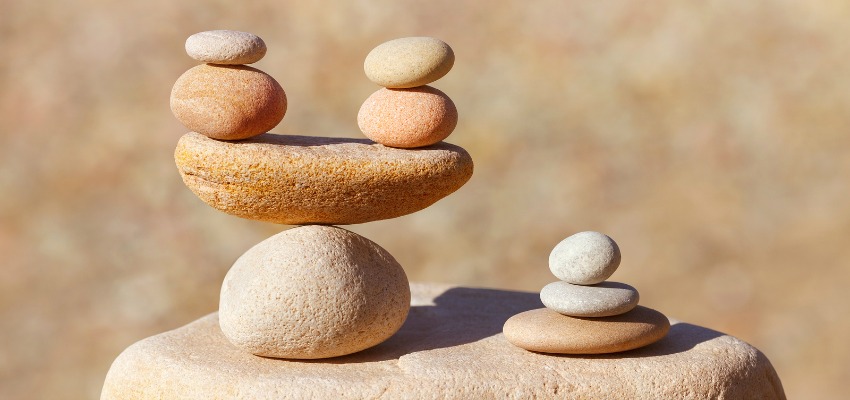
Yoga has experienced a resurgence in popularity over the last 10+ years; however, the ultimate goal of this ancient practice remains unclear for many. Why do we practice yoga? Is there one singular meaning behind all the postures, poses and breathing techniques? Are there different goals for different types of yoga? In today’s post, we’ll answer these questions and explore the ‘why’ of yoga.
“I would argue that the goal of yoga is to attain happiness,” writes Yogi Aaron, author of “The Autobiography of A Naked Yogi” and co-owner of Blue Osa Yoga Retreat + Spa in Costa Rica. “Yes happiness, that mysterious and seemingly unattainable state we all crave.”
Yogi Aaron is right. But something as simple as happiness, isn’t always so simple. After all, what defines happiness for each of us? It is a very personal, emotional and spiritual journey that will likely be different from one individual to the next. Yogi Aaron offers some insight into finding true happiness in his blog:
“Often we search for happiness in external things, whether it be material possessions like that fancy car, big house, new yoga tights, or we expect other people to make us happy, particularly our significant others.
By doing this we set ourselves up for failure as all of these external things are completely out of our control, and can be taken away at any moment. Further, this is an exercise of ego, it is our ego that wants to be perceived as “successful” and tells us we need that designer outfit or better job title.”
Yogi Aaron claims that when people practice yoga, the goal – if you want to distill it into a simple, universal method – is to learn to turn inward and find happiness within the self.
“Once this is achieved it is untouchable,” he writes. “When you have a place of pure joy within you no-one can affect this, it becomes your internal state of being.”
How the Body and Breath Affect Happiness
In practicing yoga, we learn to focus our attention. More specifically, we learn to focus our attention on our bodies and our breath, enabling a calm energy to ground us, even in unpleasant or difficult situations. By practicing this focus, we’re creating a path to inner peace. Think of it as clearing a trail in a thick, overgrown forest. The more we practice focusing on our bodies (not in a critical way, but with acceptance) and our breath, the clearer the path becomes. Soon the path will become so clear and easy to navigate, that attaining this state of peace will come as second nature.
Happiness Can Only Be Found Now
During the practice of yoga, it is important to remain in the moment as much as possible. Our minds tend to focus more on the past or the future, either out of fear, escapism or anxiety. Needless to say, these traps cannot ever lead to happiness. Thinking ahead and plotting everything we’ll do to get what we think we want can make us feel like we’re in control – which can trick us into thinking we’re safe from unpleasantness and unhappiness. This of course isn’t true and only robs us of attaining true joy.
Likewise, dwelling on the past can be a sure way to limit happiness. Are you someone who plays situations over and over again in your mind, thinking about all the things you could have done or said differently? Or do you carry emotional baggage from previous heartaches, thinking that you can’t let yourself forget about those hurts, otherwise you may get hurt again? Although we think these habits are helping protect us, they are actually imprisoning us. Through yoga’s principle of being present, we can unlearn these unhealthy mental habits.
“Yoga teaches us that all we have is the present moment, hence we should not seek happiness in the future but rather make the choice to live from a place of happiness in the current moment,” writes Yogi Aaron.
More Than Physical
“The impact of practicing yoga goes far beyond the physical asana practice done on the mat,” writes Yogi Aaron. “In our daily life we practice yoga when we practice mindfulness, noticing the sounds and smells around us, the taste and texture of our food, and most importantly our breath.”
This is something we can actually practice anywhere, at any time. We don’t have to be in a formal yoga class or even on a yoga mat at all in order to practice mindfulness. However, for many people (especially those who are new to the practice), attending a class and getting professional guidance can be extremely helpful.
Lexington Healing Arts Academy offers ongoing yoga classes in our on-site studio. Check our yoga page for details, schedule and pricing information. Have any questions? Feel free to give us a call: (859) 252-5656
Fill Out This Form to Receive a Free Information Kit
Ready to Apply?
Why Us? Watch this video:
GET THE DETAILS
Fill out this form now to receive more information.
Lexington Healing Arts Academy
272 Southland Drive
Lexington, KY 40503
Download our FREE App!
Massage Clinic:
(859) 252-5656
Yoga Studio:
(859) 252-5656 x 31
Admissions & Financial Aid:
(859) 252-5656 x 25
Workshops:
(859) 252-5656 x 30
Join Our Social Media Communities
MASSAGE
YOGA
